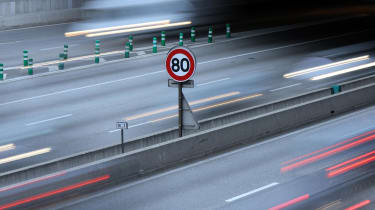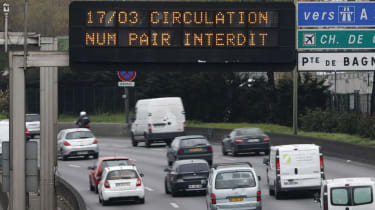Anyone caught using hands-free or Bluetooth devices also runs the risk of a €1,500 fine, as well as your licence being confiscated on the spot.
There are also some strict rules on transporting food items. Meat, milk and dairy products are prohibited. You need to pay to have fresh fruit, vegetables, plants or plant products inspected before you cross the border too.

What is the legal age for driving in France?
As a visitor to France, if you’re over 18 and hold a full driving licence that’s recognised by the French authorities, like a UK driving licence, you are legally able to drive in France. To ride a motorcycle or moped up to 125cc you must be aged 16 or over.
Car insurance and breakdown coverage for driving in France
Most UK car insurance companies allow for 90 days of cover in EU countries – but the majority will only provide third party cover. Confirm the type of insurance cover you will have in France before you leave.
Unlike insurance, breakdown cover is not a mandatory requirement in France. It is nevertheless a welcome addition to any long journey. The bigger breakdown providers will offer Europe wide coverage, but this is often an added policy. Check with your provider the type of cover you have, and if necessary you can purchase single trip covers online.

French road rules
Driving in France is slightly different to the UK. While things like road signs will be fairly similar to those we have on UK roads, road priorities, the drink drive limit and regulations will be different.
Rules for priority driving
In France, they drive on the right hand side of the road. At crossings and junctions, you give priority to traffic coming from the right, unless otherwise indicated. If you are entering a roundabout, then you must give way to traffic already on the roundabout. Emergency service vehicles with lights and sirens also have priority and you must give way to these vehicles.
Overtaking and passing
When overtaking a pedestrian or cyclist, you must leave a gap of at least one metre when travelling in urban spaces, or one and a half metres when overtaking outside of urban settings. You are allowed to cross the continuous white line, but only if it’s safe to do so.
